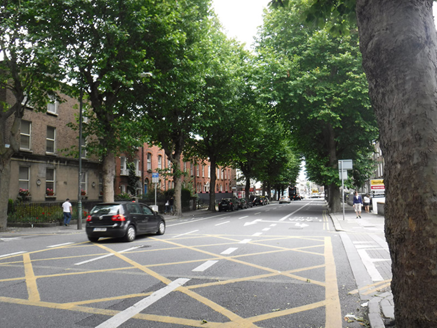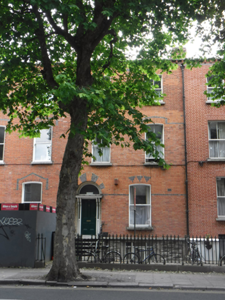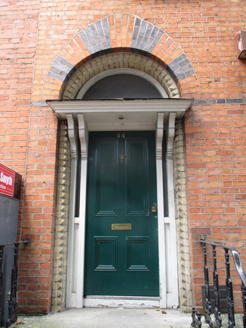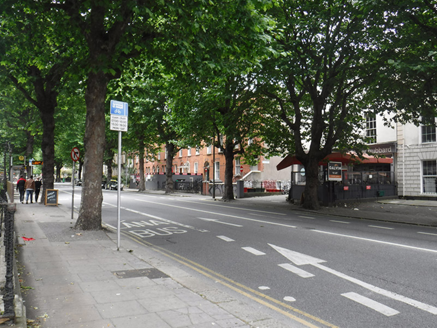Survey Data
Reg No
50110401
Rating
Regional
Categories of Special Interest
Architectural, Artistic
Original Use
House
In Use As
Apartment/flat (converted)
Date
1860 - 1880
Coordinates
315574, 232764
Date Recorded
09/07/2017
Date Updated
--/--/--
Description
Attached two-bay three-storey former house over basement, built c. 1870, with return to rear (north) elevation. Now in use as apartments. M-profile pitched roof, partially hidden behind red brick parapet having cut granite coping, with stepped corbelled brick cornice and black brick stringcourse. Red brick chimneystacks. Some cast-iron rainwater goods. Red brick, laid in Flemish bond, to wall to front (south) elevation, having black brick stringcourses. Cut granite plinth course over rusticated snecked granite basement wall, with lined-and-ruled rendered plinth course. Lined-and-ruled rendered walls to rear and return. Segmental- and square-headed window openings having raised render reveals, polychrome brick detail to voussoirs, cut granite sills and mixed two-over-two pane and one-over one pane timber sliding sash windows. Round-headed door opening with polychrome brick voussoirs, carved polychrome brick surround having nailhead motif. Timber doorcase comprising paired carved pilasters, overhanging carved cornice, plain fanlight and replacement timber panelled door. Cut granite steps with cast-iron boot-scrape and coal-hole cover to platform, flanked by cast-iron railings having wrought-iron handrail, replacement newel post. Cast-iron railings with arrowhead finials, set on granite plinth wall, to front.
Appraisal
The house retains much of its early form and character, as well as salient features, notably some early windows. Polychrome and carved brick is used to good effect to enliven the façade, employing nuances of the Gothic Revival style which was popular in the Victorian era, placing the composition firmly within a late nineteenth-century context. While the building retains the scale and proportions of its neighbours, the decorative detail marks it apart from the terrace. The survival of cast-ironwork attests to the artisanship in mass-production in ironwork and contributes to the suburban character of the streetscape. Streets were laid out in this part of the city in the early nineteenth century, following the opening of the canal harbour in 1801, though it was the latter half of the nineteenth century before this street began to develop in earnest.







